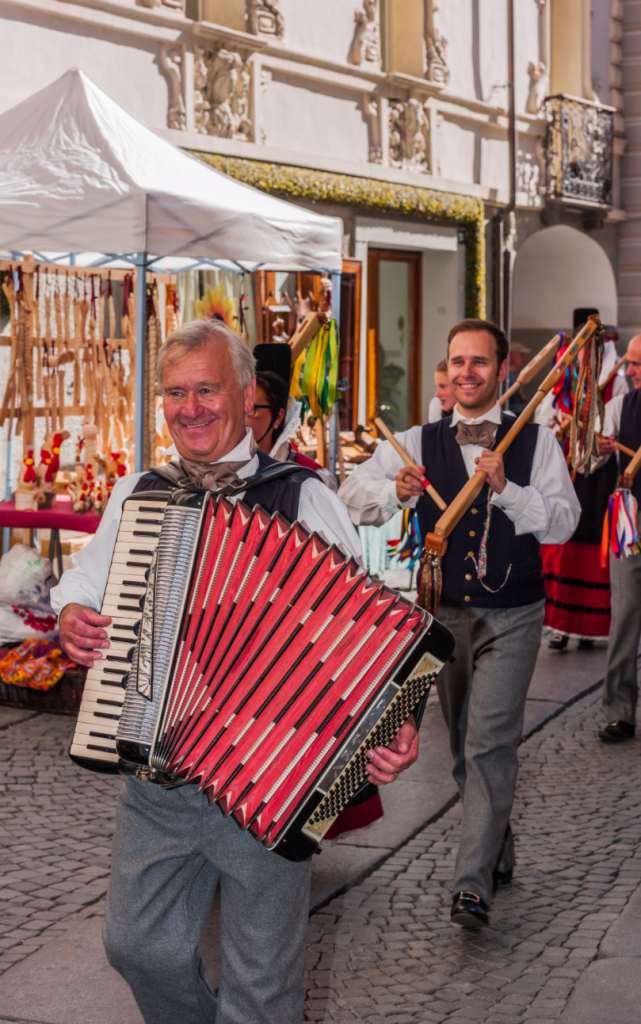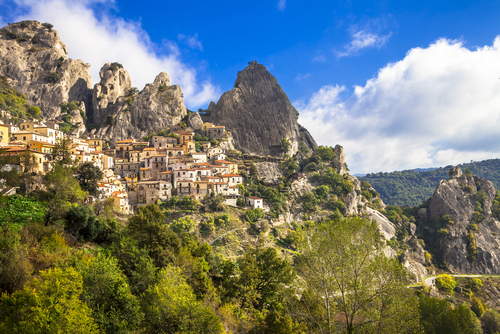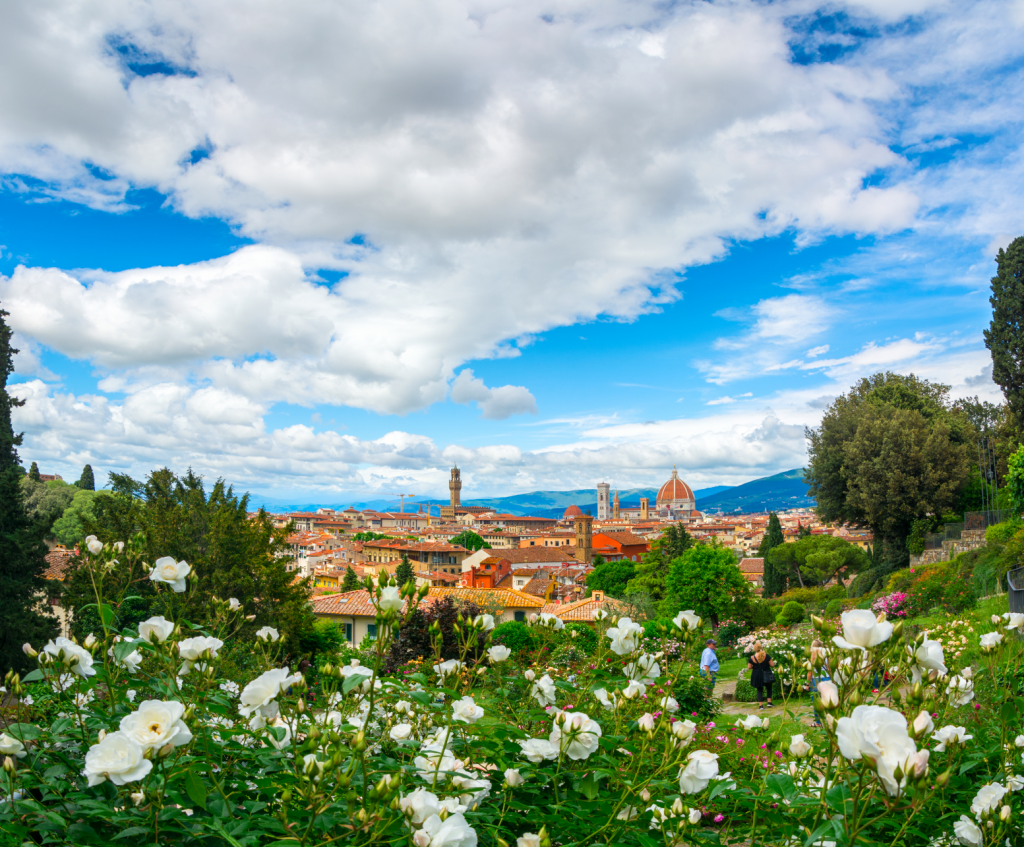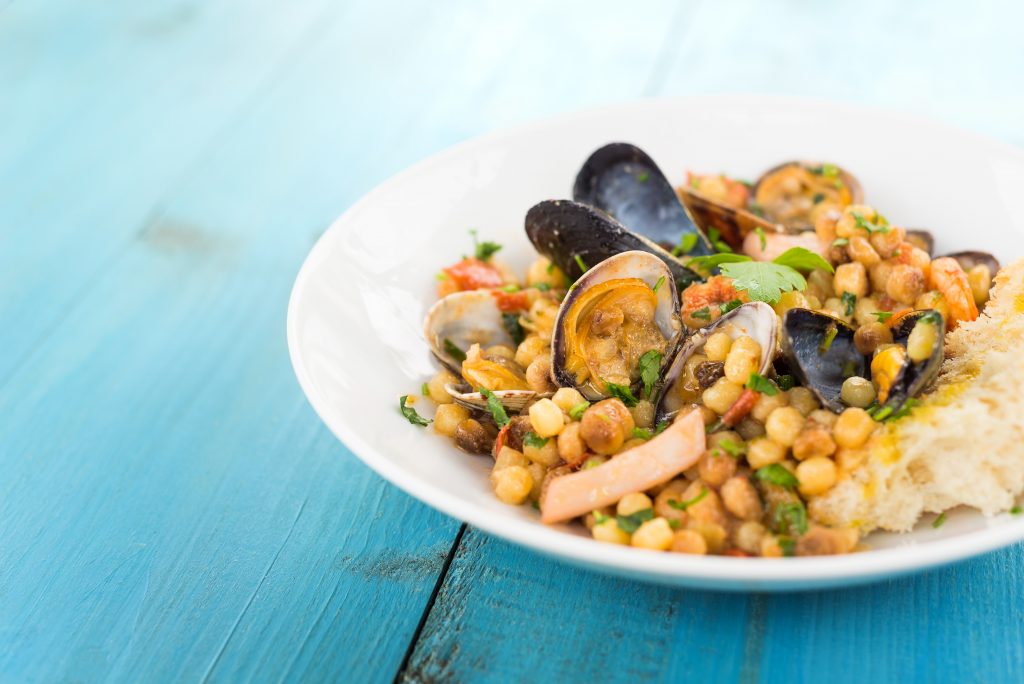All of Italy

Ilaria Di Rigo from DMC Arno Travel proposes a visit to the Foire d’Eté, the Summer Fair held in the small-town center of Aosta, the region’s capital.
What makes the fair so special to the region?
The name of the event itself is already a clue to the peculiar culture of Aosta Valley: Foire d’Eté is French, the official language of the region together with Italian. This is due to the deep influence of nearby France and its culture since the Middle Ages. The Foire d’Etè has been taking place on the first or second Saturday of August every year since 1969 and is a celebration of local artisanal products. It is the perfect chance to pick up authentic souvenirs from the region from more than 500 local artisans specializing in wood and stone sculpture, wrought iron, wooden flowers, dried flowers, and fabrics. Since this is Italy, after all, local food products are an important part of the fair and producers offer tastes of local specialties like delicious cheese, bread, local grappa liqueur, and salted meat.
How did you discover this treasure?
I discovered this interesting fair searching for a fun, local-culture event while on vacation with my extended family. The Foire d’Eté offers something for everyone, from grandparents to children of all ages.
How can visitors best experience this gem?
Don’t miss the fair’s inauguration show complete with a folkloristic parade of historical costumes, fanfare music, and some demonstrations of artisanal techniques.
For more information about Arno Travel, click here.

Luxury DMC Arno Travel takes us off-the-beaten-path into Basilicata’s Lucanian Dolomite Mountains, offering thrills and beauty for every nature lover.
Tell us about the Lucanian Dolomite Mountains.
The name of these mountains is an homage to the Dolomites in the north of Italy because of their unmistakable similarities to their alpine cousins. Even if the Lucanian Dolomites are smaller than those in northern Italy, they also consist of sandstone rocks formed under the sea ages ago, which turned into craggy peaks when the sea eventually receded. This scenic naturalistic area is laced with small hilltop villages and offers multiple experiences for every kind of outdoor activity lover: hiking, rafting, biking, bird watching, foraging, and more.
What’s a special experience in these mountains?
In the Lucanian Dolomites you can challenge yourself to an adrenaline adventure: an Angel Flight! On this cable zipline suspended between two mountain peaks, fly high over the valley for 1,550 meters, reaching speeds up to 120 km per hour. For couples seeking to add some “spice” to their vacation, you can choose to zipline together for a memorable and romantic experience.
When is the best time to visit?
If you want to ensure the perfect weather for your visit to this scenic area and off-the-beaten-path adventure activities, the best time to explore the Lucanian Dolomites is from May to October.
What role does nature play in the culture and economy of the region?
Because of the peculiar nature of this area consisting of steep peaks and dense forests, massive urbanization of the region is impossible, so local towns and villages still preserve their traditional culture. In fact, in the tiny hamlet of Pietrapertosa, you can taste an incredible typical treat specific to the town: a delicious ricotta cheese and honey pie. Delizioso!
For more information about Arno Travel, click here.

Florentine DMC Arno Travel romances with a visit to Florence’s iconic Rose Garden, located just a short walk across the river from the city’s center.
What is the local hidden treasure?
A very special place in Florence is Giardino delle Rose, the Rose Garden. Located right below the panoramic terrace of Piazzale Michelangelo with views over Florence, the Rose Garden is a quiet and peaceful corner in the charming Oltrarno district, the “other side of the Arno River.”
What makes it so special?
This little-frequented and romantic garden dates back to 1865 and lies on the slope of a small hill, offering gentle views over the city center enriched with the garden’s green hues and colorful bursts of over 350 species of roses. Away from the crowd, visitors can enjoy a relaxing walk through its paths to admire roses and other plants, or peacefully take in the breathtaking views of Florence on one of the garden’s many benches – perhaps at the small Japanese oasis.
How did you discover this treasure?
Every local Florentine knows and loves the Rose Garden and has spent an afternoon reading their favorite book in the grass or has enjoyed a romantic date surrounded by the roses.
How can visitors best experience this gem?
Though the garden is worth a visit at any time of year, Spring is when the roses are at their best. A very special experience in the garden (and a way to give back to the local community) is to volunteer with a local association for two hours, assisting in the light maintenance of the garden and its beauty.
For more information about Arno Travel, click here.

Luxury DMC Arno Travel offers two Sardinian delicacies: savory fregula from the coast and sweet seadas from the inlands.
Gastronomic Story:
The Sardinian inland is extremely rich in nature, history, and culture, with a long tradition of sheep farming and cheese making. The dualism of the island’s sea and inland is reflected in two favorite Sardinian dishes: fregula with clams and seada.
Fregula with clams is a delicious local pasta course – you will not find fregula in any other part of Italy. The pasta’s origins are not clear, but it’s possible that its creation was influenced by commercial trading in earlier centuries with Arabians, who exported their tradition of cuscus all over the Mediterranean. The process of making fregula comes from the heritage of the land. Fregula dough is made with semolina and warm salty water, then rolled into small balls that are toasted in an oven. The wise circular hand movements are a Sardinian tradition passed down through generations since antiquity, and evidence of fregula has dated back to the 10th century. The perfect fregula is served with clams in a tomato sauce.
Seada is a typical dessert from Sardinia, a “poor man’s dish” whose tradition comes from the inland farming villages. It’s a large semolina dumpling filled with the typical Sardinian pecorino cheese and lemon peel. It’s then deep-fried and served warm with honey or sugar. Delicious!
Best Enjoyed:
Imagine: a summer sunset, seated on a scenic coastal panoramic terrace. Go ahead, enjoy fregula with clams, followed by seadas. Accompany the evening with a local sparkling Vermentino wine and soft Sardinian music in the background.
For more information about Arno Travel, click here.